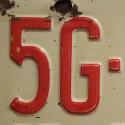September 25, 2014

LONDON -- The 5G Huddle -- No one at the 5G Huddle in London this week quibbled with the idea that 5G needs new spectrum.
But that is not the same as agreeing on which frequency bands to use, or how they might be used. Those decisions are of great importance: The choices made concerning the use of spectrum will affect which companies' technologies gain an edge. They could also impact carriers' future business models.
The International Telecommunication Union (ITU) is set to look at the allocation of 5G frequency at the World Radiocommunication Conference (WRC) in 2018 or 2019.
The ITU's next WRC conference -- WRC-15, which will take place in November next year -- will address the need for additional spectrum for mobile broadband: "The ITU-R studies on IMT and RLAN systems have shown that additional spectrum will be required to meet the high demand for mobile broadband data," according to Colin Langtry, chief of the Radiocommunications Study Group at the ITU. And in June 2015 the ITU intends to publish a report looking at the technical feasibility of IMT in the bands above 6GHz.
In the meantime, there is plenty of opportunity for divergence. Samsung Corp. in South Korea, for example, tested its 28GHz millimeter-wave band technology at the Mobile World Congress earlier this year.
But not everyone is currently behind 28GHz. The Chinese, for example, appear to have different ideas: "The spectrum demand in 2020 is 1350 to 1810MHz," while the "spectrum demand beyond 2020 is under research ... with the range of 6-100GHz study of feasibility still ongoing," according to Shaoli Kang, of the China Academy of Telecommunications Technology, speaking at the 5G Huddle.
Want to know more about 5G developments? Check out our dedicated 5G content channel here on Light Reading.
Some of the thinking about spectrum use, notably in the area of use and sharing of licensed and unlicensed spectrum, points to changes in the current mobile operator ecosystem.
In the US, the Federal Communications Commission (FCC) in April 2014 proposed a 3.5GHz innovation band to enable new spectrum-sharing practices. The FCC is looking at three tiers of access: Tier 1, which applies to incumbent access (radar and fixed satellite); Tier 2, which applies to priority access (through a spectrum access system SAS); and Tier 3, for general authorized access, according to Kent Rochford, co-director, NIST/NTIA Center for Advanced Communications, speaking in London.
"Tiered access could be fee-based ... encouraging new [business] models," said Rochford.
"You could have a data analytics business with this. It raises the question of what is a carrier," said Rochford, who asked, "what if database owners bought airtime and gave out chips?"
But spectrum sharing will have to be carefully managed, said Rochford. "Spectrum-sharing standards are going to require a high degree of coordination -- you don't want the blue screen of death on spectrum access systems," said Rochford.
The FCC and the National Institute of Standards and Technology (NIST) are also currently studying the use of U-NII-2B and U-NII-4 bands (unlicensed spectrum), and the FCC has issued a notice of inquiry related to the feasibility of millimeter-wave use, according to Rochford.
— Joanne Taaffe, special to Light Reading
Read more about:
EuropeAbout the Author(s)
You May Also Like










